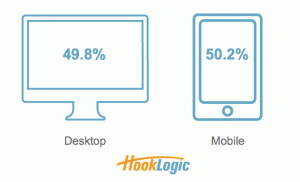If you are starting in web design, it is easy to get lost in the sea of confusing jargon. It gets worse because every new day comes with new technologies, which require you to stay up-to-date with all these new ideas. One key idea that is being mentioned in this field is database driven websites and how important they are in e-Commerce.
The debate on how scalable your databaseis and how or effectively it integrates with the web design has also been ongoing. As a web developer, you need to sift through all the confusing terms to appreciate what really matters in your project. This will help you understand how the web page is connected to the database and how you can optimize the performance of your new website.
Here are some key points to understand in order to choose a web design format that suits your goals:
- Dynamic Vs. Static Websites
If you have tried to delve into data driven web design you must have come across these two terms. Here is a brief breakdown of what each entails:
- Static website: This website does not change every time the browser loads a page. If a user clicks a button, nothing changes on the layout and content of the page. The only changes occur when the user loads a new page or when the admin loads another page on the web browser. The content is stored on the web file system and it will always be presented in the same format.
- Dynamic website: As the name implies, these pages change every time they are loaded without the webmaster having to make the changes. If a user clicks on an image or text, some changes are observed on the particular page. The fact that the content is stored outside the web file system makes it easier to manage and you can manipulate data quickly.
- Database Driven Websites
A database driven website is the best example of a dynamic website. The web page grabs information from your database and inserts the same on the web page every time it is loaded. In case there are any changes to the information in the database, the web page (which is connected to the database through programming) will also change automatically. These websites are more effective and they are commonly used for large industries.
- Examples of Database Driven Websites
If you are a web designer then you must have in mind the type of website you are building. This will help you determine whether a static website is best suited for your clients or not. Common database driven websites include:
- E-Commerce platforms: These businesses leverage data driven websites because of the expected changes in prices, offers and services. This guarantees the information internet users find is always fresh and up-to-date.
- Content Management Systems (CMS): If the website is going to use a CMS then it is database driven. Users can easily update content on the website even without the need for any specialized programming skills. These CMSs include WordPress and Joomla and they have an easy-to-use editor to allow publishing of content, editing and deleting.
- Blogs: Most blogs and online community forums are database driven because they involve regular updates by users. Whether people are leaving comments or liking a website there is immediate change on the page.
- Database Driven Websites Cost more
Every website owner wants to know the entire cost of the website right from design to launching and maintenance. As a web designer, you have to factor all things in order to give the best estimate. Of course, you have to determine if they require a static or dynamic website. If you are building a database driven website, the cost will be higher for various reasons:
- Database costs: Dynamic websites require databases be it MySQL Community Server, Oracle Express Edition or any other. If you are creating an e-commerce website, you need a database to support shopping carts, discussion forums, registration systems and much more. Depending on your hosting package, you might not get a database allowance and you might have to upgrade for better performance. This comes at a higher cost.
- Custom database design: If a website requires a database design built specifically to suit it the cost will go up. Such factors such as efficiency of data structure, functionality and development lead to higher costs of the website.
- Database connectivity: Before the website becomes operational, more codes are needed to optimize the database and make it possible to process, retrieve and manipulate data. This adds to the cost of the database driven website.
- Back-end administration: Database driven websites end up costing more due to the needed technical database services. Whether the owner goes for in-house or remote database administration, these services add to the cost of the website.
- Initial database population: Setting up the database also calls for technical skills irrespective of whether the database platform is custom-design or pre-built. Initial database population by a database administrator increases the cost of these websites.
- Backups: If there is a database, backup services are invaluable. Backups come with a cost and in most cases you will have to depend on more than one; both offline media storage and cloud backup for instance.
With time, the database driven website will need upgrades to increase capacity. This is unavoidable because a business website operates optimally when there is enough database capacity. Such upgrades by web developers or database administrators require more investment.
- Advantages of a Database-Driven Website
Why should you advise your clients to go for a database driven website? Here are some strong ideas:
- It is easier and faster to update content. A few clicks are all the webmaster needs to update the content. Changes are made almost in real-time
- It is ideal for an ecommerce site where different products need to be added, prices changes and offers introduced.
- No need for specialized HTML knowledge or expertise to change content on the website.
- High scalability: Every business grows with time and a database driven website offers room for growth. Changing graphics, layout or interactivity can be done anytime.
- Reduced chances for error: Physical data entry by employees is bound to lead to errors, which can lead to downtime, bugs and other problems. Rectifying such problems on data-driven websites is easy and this improves user experience.
A database driven website enhances a company’s performance online. As a web designer, you now have some points to consider as you consult with your clients.
Digital & Social Articles on Business 2 Community(52)








